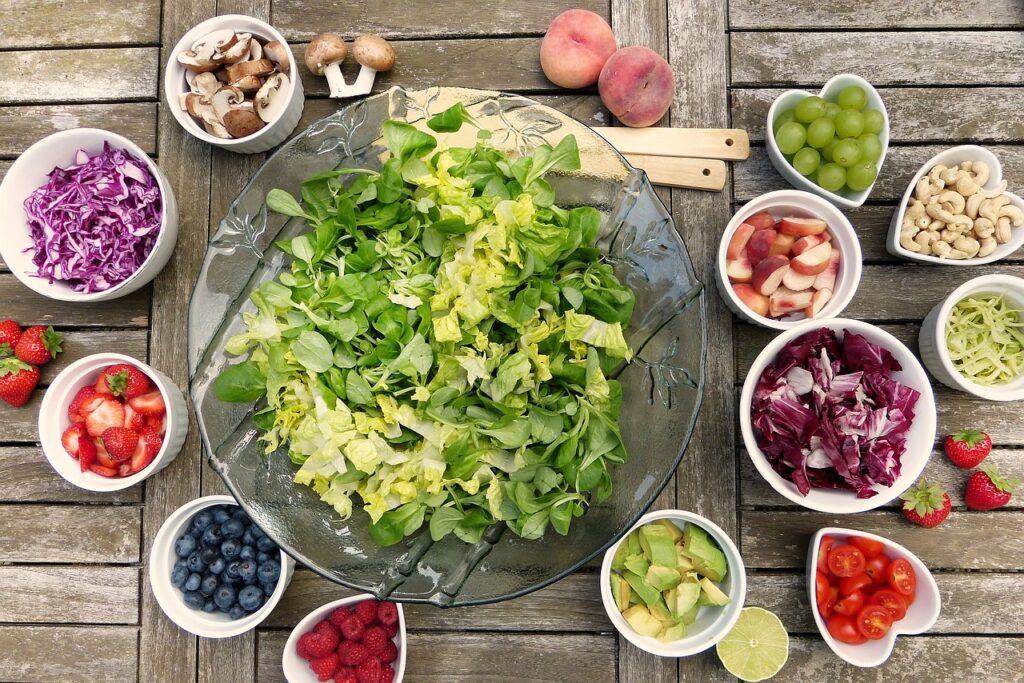
Eating a well-balanced and nutritious diet is essential for maintaining good health and preventing chronic diseases. But with so much conflicting information available online, it can be challenging to know what constitutes a healthy meal plan. In this article, we will discuss the key principles of building a balanced and nutritious meal plan.
- Start with a solid foundation
The foundation of a healthy meal plan is to choose foods that are high in nutrients and low in calories. These include whole grains, fruits, vegetables, lean proteins, and healthy fats. When creating your meal plan, aim to include a variety of these foods in each meal and snack.
- Get your macros in check
Macronutrients, or macros, are the three main nutrients that make up our diet: carbohydrates, protein, and fat. Each of these macronutrients plays a vital role in our body, and it’s essential to get the right balance of each.
Carbohydrates: Carbs provide energy to our body and brain. They should make up around 45-65% of your total daily calorie intake. Choose complex carbs like brown rice, quinoa, sweet potatoes, and whole-grain bread over simple carbs like candy, sugary drinks, and white bread.
Protein: Protein is crucial for building and repairing tissues in our body, including muscles. It should make up around 10-35% of your total daily calorie intake. Good sources of protein include lean meats, fish, tofu, beans, and lentils.
Fat: Fat provides energy and helps our body absorb essential vitamins and minerals. It should make up around 20-35% of your total daily calorie intake. Choose healthy fats like olive oil, nuts, seeds, and avocados over saturated and trans fats found in processed foods and fried foods.
- Don’t forget fiber
Fiber is a type of carbohydrate that our body can’t digest. It’s essential for maintaining good digestive health, regulating blood sugar levels, and reducing the risk of chronic diseases like heart disease and type 2 diabetes. Aim to include high-fiber foods like fruits, vegetables, whole grains, beans, and nuts in your meal plan.
- Plan your portions
Portion control is crucial when it comes to building a healthy meal plan. Eating too much of even healthy foods can lead to weight gain and other health problems. Use the following guidelines when planning your portions:
- Vegetables: Aim to fill half your plate with non-starchy vegetables like leafy greens, broccoli, and carrots.
- Grains: Choose whole grains like brown rice, quinoa, and whole-grain bread. Aim for 1-2 servings per meal, depending on your calorie needs.
- Protein: Aim for 3-4 ounces of lean protein per meal, or roughly the size of a deck of cards.
- Fat: Aim for 1-2 servings of healthy fats per meal, like a tablespoon of olive oil or a handful of nuts.
- Don’t forget about hydration
Water is essential for maintaining good health, and dehydration can lead to a host of problems like fatigue, headaches, and constipation. Aim to drink at least 8 cups of water per day, or more if you are physically active. You can also get water from other sources like fruits, vegetables, and herbal tea.
- Be mindful of added sugars and salt
Added sugars and salt can add up quickly, even in seemingly healthy foods like yogurt and bread. Too much added sugar can lead to weight gain, type 2 diabetes, and heart disease, while too much salt can lead to high blood pressure and other health problems. Be mindful of the added sugars and salt in your diet and aim to limit them as much as possible.
- Make healthy swaps
Making healthy swaps is an effective way to improve the nutritional value of your meal plan without sacrificing taste. For example, you can swap white bread for whole-grain bread, regular pasta for whole-grain pasta, and soda for sparkling water. You can also swap out unhealthy fats like butter and margarine for healthy fats like olive oil or avocado. By making these small changes, you can significantly improve the overall healthfulness of your meals without feeling like you’re sacrificing flavor or enjoyment.